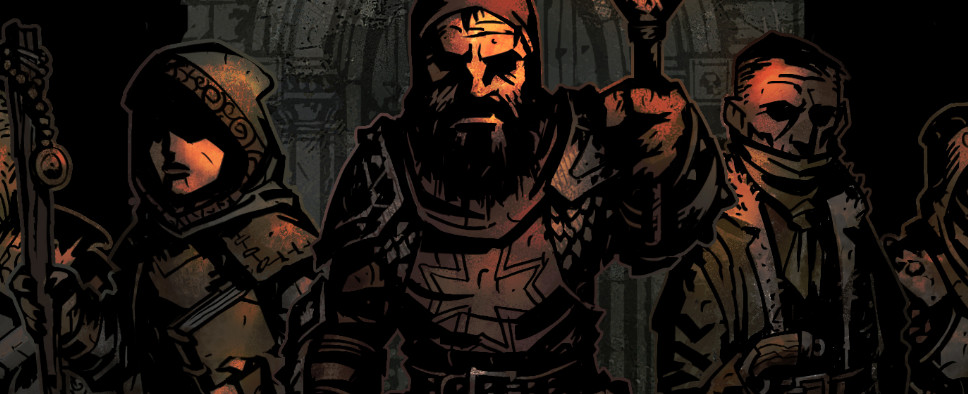Darkest Dungeon Interview on Game Mechanics
-
Category: News ArchiveHits: 1710

Darkest Dungeon developers have had a chance to talk with Rock, Paper, Shotgun's Alex Wiltshire about the technical side of their game. This introspective interview brings up an interesting point how various limitations can further the cause of creativity. The Bard's Tale, Eye of the Beholder, and Ultima are named as Darkest Dungeon's inspirations but the final product is fairly distinct and has a definite identity of its own. The article describes the step-by-step thought process that led to this.
Also, an interesting angle is how Darkest Dungeon manages to create tension not with the constant threat of jump-scares and not only through its grim atmosphere, but through its game mechanics. Even the most carefully prepared plan can go awry at any moment due to an unfortunate roll, or an enemy using an ability you have no control over that, for example, messes up your party's positioning and makes your adventurers essentially useless. Some people dislike such perceived randomness, but there's no denying that it lies in the core of what make Darkest Dungeon unique and compelling for many.
Here's an excerpt:
“We had this idea for Darkest Dungeon which would be about the real downsides of being an adventurer, really,” Sigman tells me. At this early point, he and Bourassa had yet to found Red Hook Studios and were casting around for a project on which they could work together. They started to sketch out a tile-based game in which the party would move as a gaggle through a dungeon with transitions as they went into combat into a new view.
“Chris was saying a lot that resonated with me,” says Sigman. “You get tired of looking at people’s heads and it’s hard to bond with them, so he came up with this idea of side-on, and then you really get to see them well.”
“We knew we wanted to get down and close to the characters and show them off a little bit,” says Bourassa, who led Darkest Dungeon’s art. And he certainly capitalised on that. Darkest Dungeon’s heroes and enemies are large, detailed and extremely characterful, all the better for showcasing his striking thick-lined art style. They stick in the mind; you get attached to their all too commonly short lives and share some of their dread of their monstrous foes, since up close they seem so vulnerable.
“It led us down a bit of a rabbit hole as far as presentation goes,” says Bourassa. But, as the game’s lone artist for much of its development, it also had to be something that he could make on his own. Having a top-down view that transitioned to a side-on one for combat would significantly increase his workload.
“I like looking at the same character the whole time,” Bourassa says. “I don’t particularly enjoy switching modes with a big fade-to-black and then you’re looking at something completely different. But we thought we had to do that for a while! We thought that’s how you make RPGs, because it’s what’s understood to be the way to deliver a turn-based RPG.”
So they broke the rules, maintaining the same view for both dungeon-crawling and combat. While that decision was driven by the need for tight budgeting, it also provides Darkest Dungeon with a great deal of its personality: gritty, intimate, dangerous, claustrophobic. A game in which walking and battling come hand-in-hand and you’re always kept down on your heroes’ level.
As Bourassa and Sigman discussed what it’d mean for the combat design and what it meant for a line of heroes to face a line of monsters, they began to imagine a hero reaching with a spear deep into the ranks of the enemies. With that came the concept of positioning: where the place a hero or monster stood in the ranks could affect its ability to act.
Sigman remembered The Bard’s Tale and how heroes would be divided into two ranks. Those in the front one could hit with melee weapons, while those in the back could only hit with ranged or magical attacks. “So that was a mental model that we could start building on,” he says. “And it makes sense. You know you want your tank up front and stuff like that. I think we were pleasantly surprised as we started diving into that that there was a fair amount more we could do with this four-on-four than, say, those other games had done.”
“It makes logical sense too, right?” says Bourassa. “You couldn’t hit somebody all the way behind three other guys with a sword. So it’s easy for people to understand what we’re trying to simulate when they sit down and look at it. It makes that immediate logical sense.”

